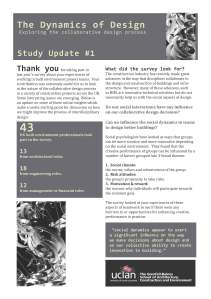Orchestrating architecture May 19, 2010
Posted by jennibarrett in Uncategorized.Tags: architecture, drawing, interdisciplinary, multidisciplinary, music
1 comment so far
Goethe famously said that “architecture is frozen music.” The phrase is well worn and to be honest, I don’t think we really know what he was on about. Nevertheless, it asks us to look at the similarities between the two pursuits.
It occurs to many that there are numerous similarities between music and architecture, whether that be the creation of structure on which to hang it from or the rule-following of the styles and historic tradition. There is Classical Music and Classical Architecture. There is Baroque music and Baroque architecture too, and so on. And while we’re on the subject of rules, both artforms rely on mathematics to be communicated and executed.
Aha! It is the communication and execution of music and architecture that makes them so similar.
However, knowledgable of and skilled at painting we may consider ourselves, we will never have the opportunity to form a close relationship with the creator by assisting him in its execution. We can never hope for the chance to blob a bit of yellow on a sunflower for Van Gogh or chip a bit of stone off for Michelangelo. However, as a skilled musician, we may play a key part in executing the compositions of Bach or Beethoven. Similarly, the built environment professionals and craftsmen are placed to play a key part in executing the art of architecture.
It is recognised today, that the sharp contrasts drawn between the professionals, with the architect as chief artist is not conducive to creating great buildings in today’s industrial and cultural climates. The old ways that the architect communicated via clear specific drawings which must be obeyed at all costs, is not necessarily going to give us the best physical outcome.
And it is a musician that might help us think about a way forward.
In notating his “Concert for Piano and Orchestra,” John Cage dismisses formal orchestral notation in favour of a method which communicates his ideas, rather than the physical manifestation. He spaces out sound ‘events’ on the page and aurally, without notating a hierarchy that would define a specific aural outcome. This allows the performer to apply their own interpretation and the knowledge of their instrument to create the music. Cage, as the composer, has deferred control of the outcome whilst maintaining the intention. The boundaries between the disciplines and musical roles become blurred.

Can an architect defer such control? The architect, Daniel Libeskind has explored this. In “Chamber Works,” he uses graphic notations, rather than drawings, to communicate his architectural intentions. There is no clear demarcation of disciplinary input in the drawings. This allows the others involved in the execution of building to apply their own interpretation and specialist knowledge within the artistic framework.

The perception of professional boundaries becomes blurred, but this would allow all parties to subscribe to the artistic intention. If emotions of all those involved in the execution of the outcome are fully subscribed and engaged – as in the orchestra – then perhaps the outcome is more likely to invoke the emotions and appreciation of its audience. Similarly, architects will need to defer artistic control and expression to the executors of the outcome, if buildings are to become places of soul and emotion. Until, the framework for executing architecture replaces, at least in part, its emphasis on law, contracts and deliverables, then we can continue to expect buildings that are soulless but safe.

